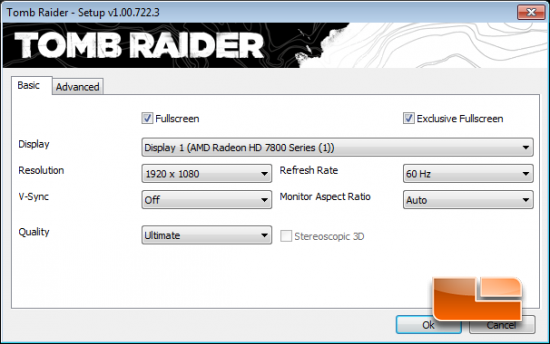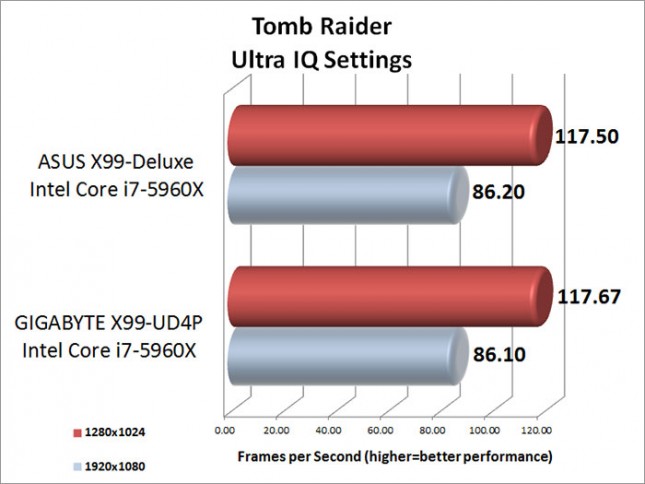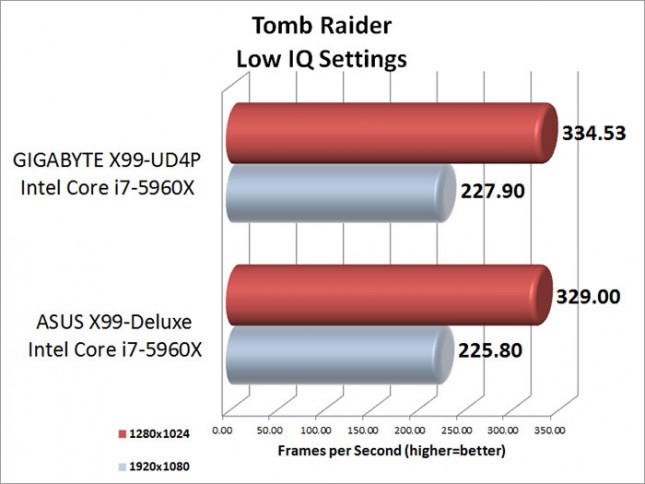GIGABYTE GA-X99-UD4P LGA 2011-v3 Motherboard Review
Tomb Raider

On March 5th, 2013 Square Enix released Tomb Raider, billed as a reboot of the franchise. In Tomb Raider, the player is confronted with a much younger Lara Croft who is shipwrecked and finds herself stranded on a mysterious island rife with danger, both natural and human. In contrast to the earlier games Croft is portrayed as vulnerable, acting out of necessity, desperation and sheer survival rather than for a greater cause or personal gain.

The game has been built on Crystal Dynamics’s game engine called the “Crystal Engine” and the graphics look fantastic. AMD and Crystal Dyanmic’s worked on a new technology called TressFX Hair, which AMD describes as the worlds first in-game implementation of a real-time, per-strand hair physics system for this game title. We set the image quality to ultimate for benchmarking, but we disabled TressFX Hair under the advanced tab to be fair to NVIDIA graphics cards that don’t support the feature.

Benchmark Results: Running the systems with the ‘Ultra Image Quality’ settings the GIGABYTE X99-UD4P and the ASUS X99-Deluxe were pretty much equal. At 1920×1080 the GIGABYTE X99-UD4P averaged 86.1 frames per second while the ASUS hit an average of 86.20 frames per second. Dropping the resolution to 1280×1024 the GIGABYTE X99-UD4P averaged 117.67 frames per second while the ASUS hit 117.50 frames per second.

Benchmark Results: Dropping the image quality to the lowest available in Tomb Raider, the GIGABYTE X99-UD4P and the ASUS X99-Deluxe were still running a close heat. The GIGABYTE X99-UD4P was able to pull away slightly with an average of 227.90 frames per second at 1920×1080 while the ASUS averaged 225.80 frames per second. Dropping the resolution to 1280x1024the GIGABYTE X99-UD4P averaged 334.53 frames per second while the ASUS X99-Deluxe averaged 329.00 frames per second.
